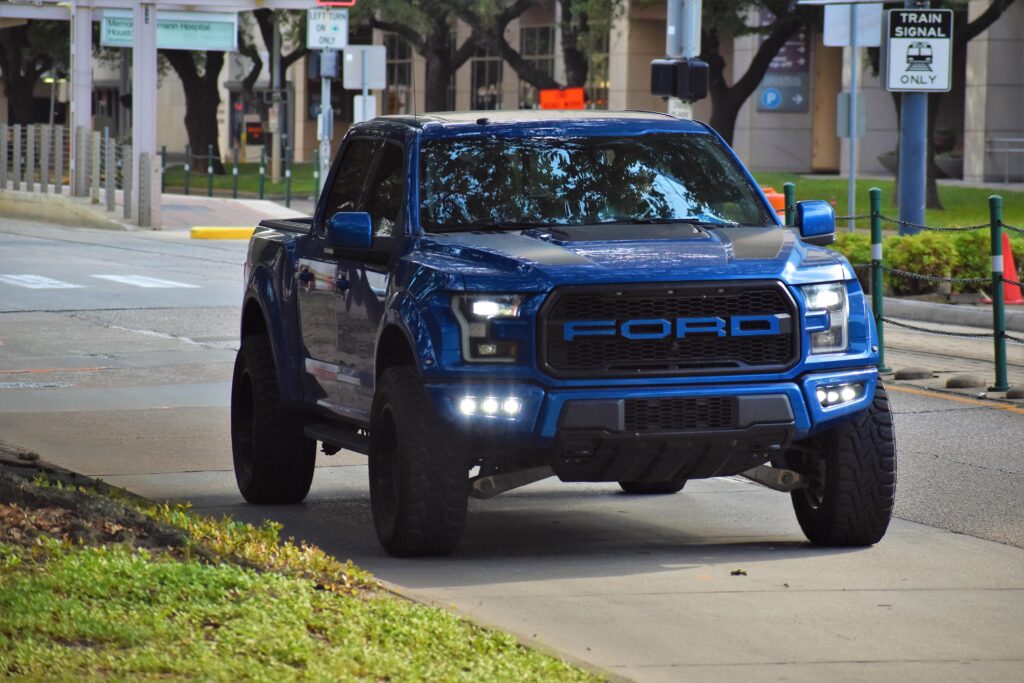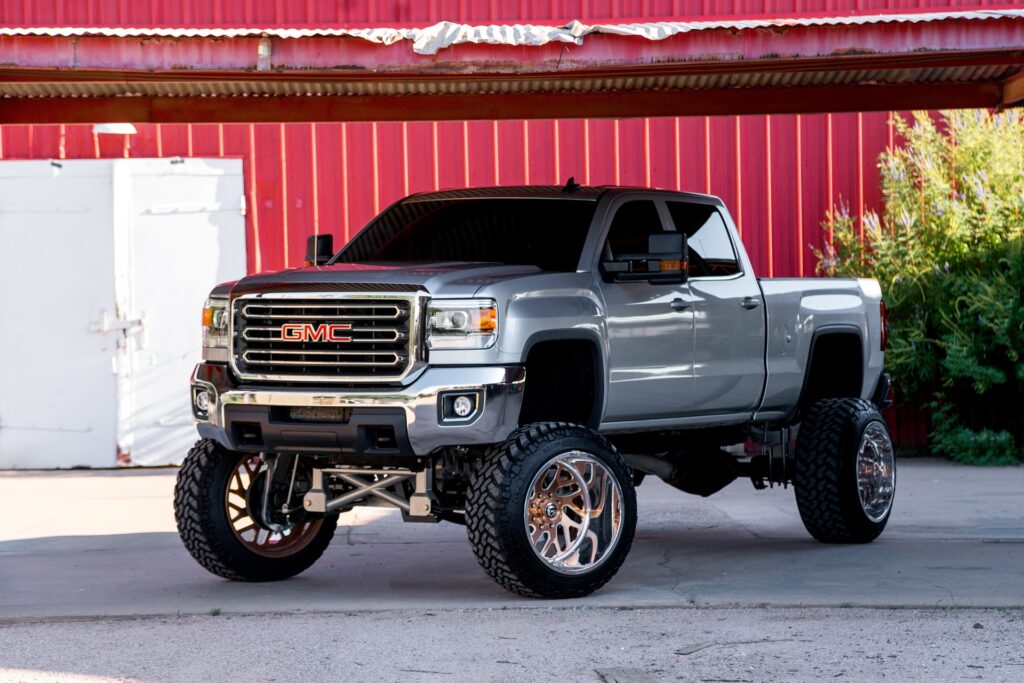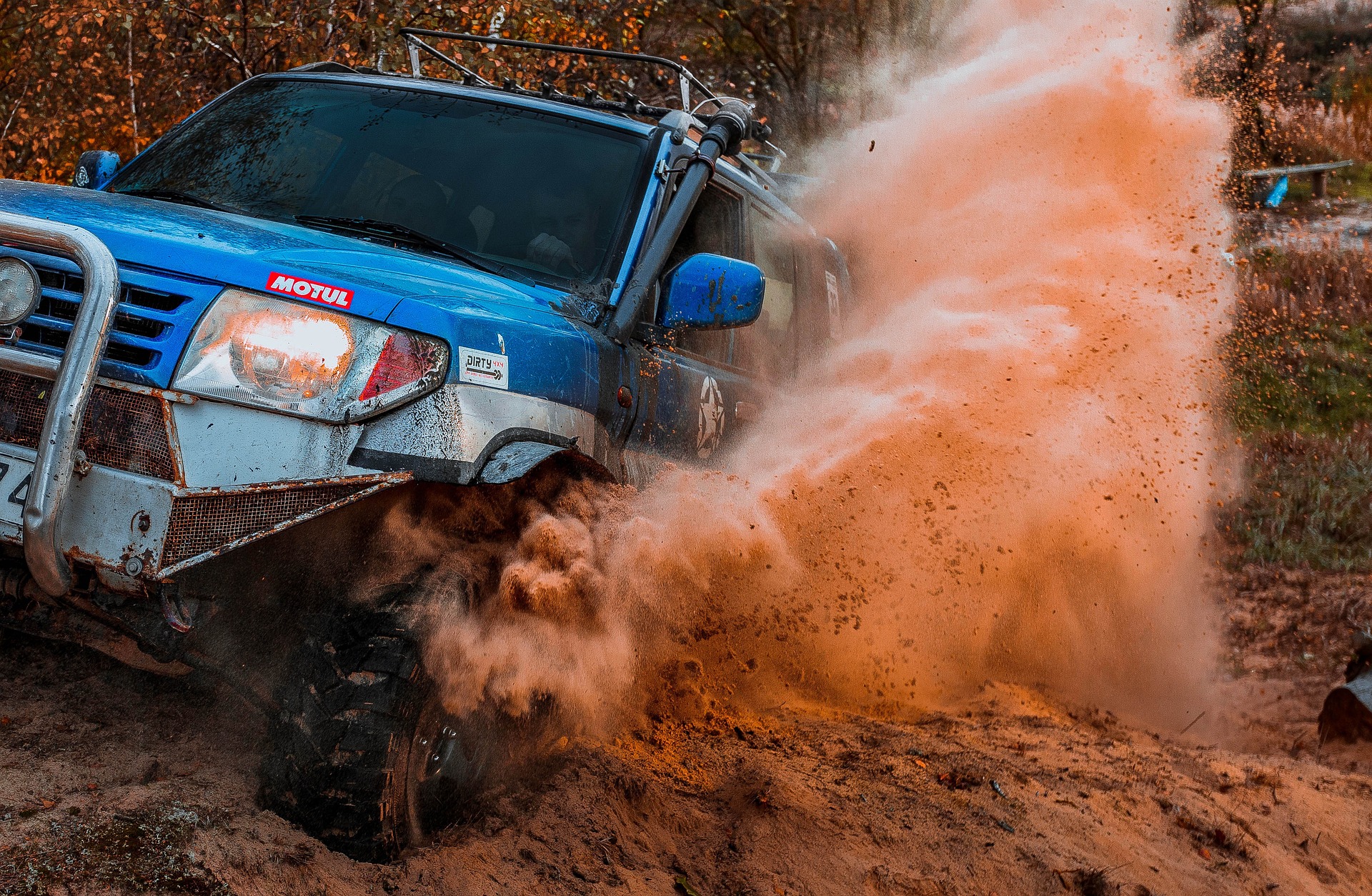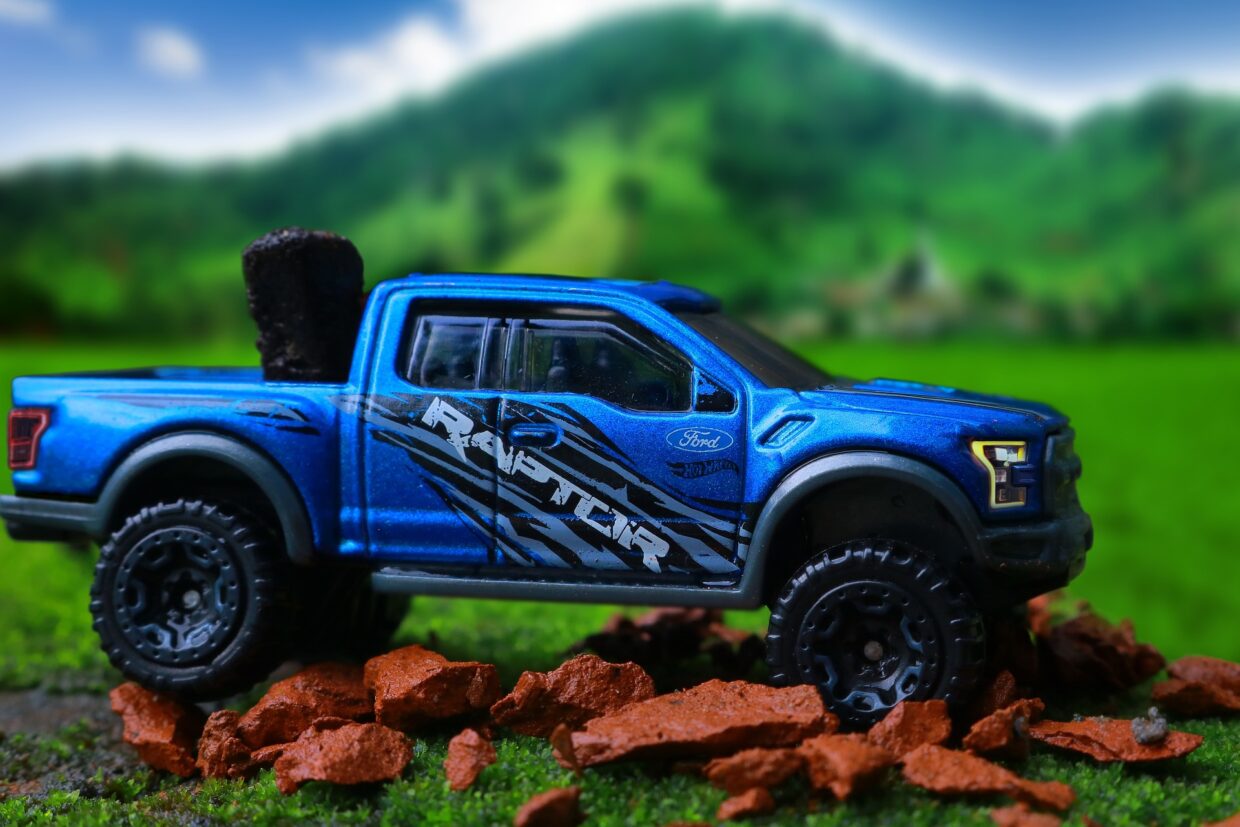to enhance their off-road performance. In this article, we will discuss why content owners might be interested in lift kits and how they can benefit their vehicles. We will explore the various types of lift kits available and the potential effects they can have on your vehicle’s performance. By the end of this article, you will have a better understanding of lift kits and be able to make an informed decision about whether or not they are right for you.
Understanding Lift Kits
Owners may inquire about lift kits when looking to improve their vehicle’s off-road performance. Lift kits are aftermarket modifications that raise the height of a vehicle’s suspension, increasing its ground clearance. This article will explore what lift kits are, the different types available, and the benefits of installing them. We will also discuss various factors that should be considered before choosing the right lift kit for your vehicle, the installation process, and the effects on off-road performance. Additionally, we will touch on potential drawbacks, safety considerations, legal regulations and certification, maintenance, and upkeep.
What are lift kits?
Lift kits are modifications that elevate the suspension of a vehicle, increasing the distance between the chassis and the ground. This is achieved by replacing or modifying the vehicle’s suspension components, such as springs, shocks, and control arms. Lift kits are commonly used in off-road vehicles to improve their ability to traverse rough terrain, as they provide additional ground clearance and accommodate larger tires.
Types of lift kits
There are various types of lift kits available, each offering different benefits and considerations. The most common types include:
- Spacer Lifts: Spacer lifts are the simplest and most cost-effective option. They involve adding spacers between the original suspension components to increase the ride height. Spacer lifts are typically used for lifting the front and rear of vehicles evenly.
- Coil Spring Lifts: Coil spring lifts replace the vehicle’s original coil springs with taller ones, increasing the overall ride height. This type of lift kit provides enhanced articulation and can accommodate larger tires.
- Suspension Lifts: Suspension lifts are the most comprehensive and versatile option. They involve replacing the entire suspension system, including shocks, struts, and all associated components. Suspension lifts offer a greater lift height and provide improved off-road performance.
Benefits of installing lift kits
Installing a lift kit in your vehicle can offer several advantages, including:
- Improved ground clearance: Lift kits raise the vehicle’s height, increasing ground clearance and reducing the risk of undercarriage damage when traversing uneven terrain.
- Enhanced approach and departure angles: By lifting the front and rear of the vehicle, lift kits improve the approach and departure angles. This allows for better maneuverability over obstacles such as rocks, logs, and ditches.
- Increased tire size options: Lift kits create additional space in the wheel wells, allowing for the installation of larger tires. Larger tires offer improved traction and stability when off-roading.
Factors to Consider
Before diving into the world of lift kits, there are several factors you should consider to ensure you make the right choice for your vehicle. These factors include vehicle compatibility, budget considerations, and legal restrictions.
Vehicle compatibility
Not all vehicles are suitable for lift kits, so it’s essential to check compatibility before making a purchase. Factors such as the vehicle’s suspension design, weight distribution, and drivetrain can impact the effectiveness and safety of the lift kit. Consult your vehicle’s manufacturer or a reputable lift kit supplier to determine if your vehicle is compatible.
Budget considerations
Lift kits can range in price depending on the type, brand, and quality. It’s important to set a realistic budget and determine how much you are willing to invest in improving your vehicle’s off-road performance. While it may be tempting to opt for a cheaper lift kit, remember that quality and durability should be prioritized to ensure your safety and the longevity of your vehicle.
Legal restrictions
Before installing a lift kit, it’s crucial to research and understand the legal restrictions and regulations regarding lift heights in your jurisdiction. Many regions have specific laws dictating the maximum allowable lift height, bumper height, and headlight positioning. Failure to comply with these regulations can result in fines, vehicle impoundment, or even restrictions on road usage.

Choosing the Right Lift Kit
Now that you have considered the essential factors, it’s time to choose the right lift kit for your vehicle. To do this, you must determine the desired lift height, select the suspension type, and consider additional accessories.
Determining the desired lift height
Before selecting a lift kit, think about what you intend to use your vehicle for and the type of terrain you will be navigating. A moderate lift of 2-4 inches is generally suitable for most off-road enthusiasts, as it provides a good balance between ground clearance and vehicle stability. However, for extreme off-roading, you may require a higher lift.
Selecting the suspension type
Consider the type of suspension system you want for your vehicle. Spacer lifts are ideal for light off-roading and minimal lift requirements. If you plan on tackling more challenging trails and want an all-round improvement in off-road performance, a suspension lift may be the better option.
Considering additional accessories
When installing a lift kit, you may need to consider additional accessories to ensure optimal performance. These can include extended brake lines, longer control arms, and upgraded drivetrain components. Consult with an expert or a reputable lift kit supplier to determine if any additional accessories are necessary for your specific vehicle and desired off-road activities.
Installation Process
Once you have chosen the right lift kit for your vehicle, you will need to decide whether to opt for professional installation or a do-it-yourself (DIY) approach. Consider the required tools and equipment, as well as the step-by-step guide for the installation process.
Professional installation vs. DIY
While some experienced enthusiasts may choose to install a lift kit themselves, it is generally recommended to have a professional handle the installation. Lift kits involve intricate suspension modifications, and any errors during installation can lead to compromised safety, reduced vehicle performance, and increased maintenance issues.
Required tools and equipment
Installing a lift kit can require a range of specialized tools and equipment, depending on the complexity of the kit and your vehicle’s make and model. Some common tools needed include various wrenches, sockets, jack stands, and a floor jack. Consult the lift kit manufacturer’s instructions for a complete list of required tools and equipment.
Step-by-step guide
The installation process will vary depending on the lift kit and your vehicle’s specifications. It is crucial to carefully follow the manufacturer’s step-by-step guide for a successful installation. Improper installation can introduce noise, vibrations, and premature wear to the vehicle’s suspension components.

Effects on Off-Road Performance
Once the lift kit is installed, you can expect various improvements in your vehicle’s off-road performance. These include improved ground clearance, enhanced approach and departure angles, and increased tire size options.
Improved ground clearance
One of the primary benefits of lift kits is increased ground clearance. With a higher ride height, your vehicle can confidently navigate over rocks, ruts, and uneven terrain without scraping or damaging the undercarriage.
Enhanced approach and departure angles
Lifting the front and rear of your vehicle improves the approach and departure angles, allowing for smoother and safer navigation through steep inclines and declines. This enables your vehicle to traverse obstacles with greater ease, reducing the risk of getting stuck or causing damage to the front or rear end.
Increased tire size options
Lift kits create additional space in the wheel wells, accommodating larger tires. Larger tires offer enhanced traction and stability, especially when driving on soft or slippery surfaces. The larger footprint also provides a more aggressive and commanding look to your off-road vehicle.
Potential Drawbacks
While lift kits offer numerous benefits, it’s important to consider potential drawbacks that come with installing them. These include altered vehicle dynamics, effects on warranty, and maintenance and repair considerations.
Altered vehicle dynamics
Lifting your vehicle can impact its handling and stability, particularly in high-speed or emergency driving situations. The higher center of gravity introduced by lift kits can make the vehicle more susceptible to body roll and instability, especially during sharp turns or sudden maneuvers. It is crucial to drive with extra caution and become familiar with the changes in vehicle dynamics after installing a lift kit.
Effect on warranty
Modifying your vehicle with a lift kit can potentially void your manufacturer’s warranty, particularly if the modifications result in mechanical or electrical issues. It’s important to thoroughly review your warranty terms and conditions before making any modifications. In some cases, manufacturers may offer specific lift kit options that are covered under warranty, so it’s worth exploring those options.
Maintenance and repairs
Lifted vehicles may require additional maintenance and repairs compared to their stock counterparts. Components such as steering, suspension, and drivetrain may experience increased wear and tear due to the added stress from off-roading activities. Regular inspections, proper maintenance, and prompt repairs are crucial to ensure the long-term reliability and safety of your lifted vehicle.

Safety Considerations
When considering a lift kit, it’s essential to understand the safety considerations involved. Lift kits can impact braking and handling, increase the risk of rollovers, and require recommended safety precautions.
Impacts on braking and handling
Lift kits can affect a vehicle’s braking and handling characteristics. The higher center of gravity and increased body roll can introduce changes in braking distances and reduce overall stability, particularly during emergency situations. It is important to adjust your driving style accordingly and allow for additional stopping distances.
Risk of rollovers
Lifting a vehicle raises its center of gravity, increasing the risk of rollovers, especially during aggressive off-roading maneuvers or improper driving techniques. It is crucial to drive cautiously, adhere to recommended speed limits, and avoid sudden, sharp turns that could destabilize the vehicle.
Recommended safety precautions
When driving a lifted vehicle, it is recommended to follow specific safety precautions. These include adjusting tire pressures for off-roading, using seat belts at all times, avoiding excessive speeds, and avoiding situations that put excessive stress on the vehicle’s suspension.
Legal Regulations and Certification
Before installing a lift kit, it’s important to familiarize yourself with the local laws and regulations that govern vehicle modifications in your jurisdiction. Lift kits may require certification and compliance with specific standards to ensure they meet safety requirements. Failure to adhere to these regulations can result in fines, limitations on vehicle usage, and implications for insurance coverage.
Local laws and regulations
Different regions have different laws and regulations regarding lift kits. These laws often dictate maximum allowable lift heights, bumper heights, and headlight positioning. It’s crucial to research and understand the specific regulations applicable to your area before installing a lift kit.
Certification requirements
Some jurisdictions require lift kits to be certified by approved organizations to ensure compliance with safety standards. Certification processes involve rigorous testing and inspection procedures, verifying that the lift kits meet the necessary requirements for installation. Consult local authorities or specialized certification agencies to determine if your lift kit requires certification.
Implications for insurance coverage
Modifying your vehicle with a lift kit can have implications for your insurance coverage. Some insurance companies may require notification of any modifications made to your vehicle, potentially resulting in adjusted premium rates. Failure to disclose modifications could void your insurance coverage in the event of an accident or damage to your vehicle. It’s essential to consult with your insurance provider to understand the impact of lift kit installation on your coverage.
Maintenance and Upkeep
To ensure the longevity and optimal performance of your lifted vehicle, regular maintenance and upkeep are necessary. Regular inspections and adjustments, component replacements, and addressing common issues are all part of the ongoing maintenance process.
Regular inspections and adjustments
Regularly inspecting your lifted vehicle for signs of wear, such as loose bolts, leaking shocks, or damaged components, is essential. Adjustments may be required to maintain proper alignment, tire balance, and suspension performance. It is recommended to schedule regular maintenance intervals with a reputable mechanic or dealership experienced in lifted vehicles.
Component replacements
Lifted vehicles may experience increased wear and tear on certain components due to the additional stress faced during off-roading activities. Components such as ball joints, control arm bushings, and steering linkages may require more frequent replacements compared to stock vehicles. Regularly monitor these components and replace them as necessary to maintain the safety and performance of your lifted vehicle.
Addressing common issues
Lifted vehicles can experience specific issues that may require attention. These issues include steering wobble or shimmy, vibrations, excessive body roll, and uneven tire wear. If you notice any of these issues, consult with a qualified mechanic to diagnose and address the problem promptly.
Conclusion
Lift kits can be a valuable modification for owners seeking improved off-road performance. By increasing ground clearance, enhancing approach and departure angles, and allowing for larger tires, lift kits offer notable advantages for off-road enthusiasts. However, it is essential to consider vehicle compatibility, budget, legal restrictions, and safety considerations when exploring lift kits for your vehicle. Seek expert advice, consult reputable lift kit suppliers, and adhere to local laws and regulations to ensure a safe and legal modification process. Remember, maintaining your lifted vehicle is crucial for its long-term reliability and performance. Keep up with regular inspections, address maintenance issues promptly, and enjoy the benefits of your lifted vehicle while exploring the great outdoors.


